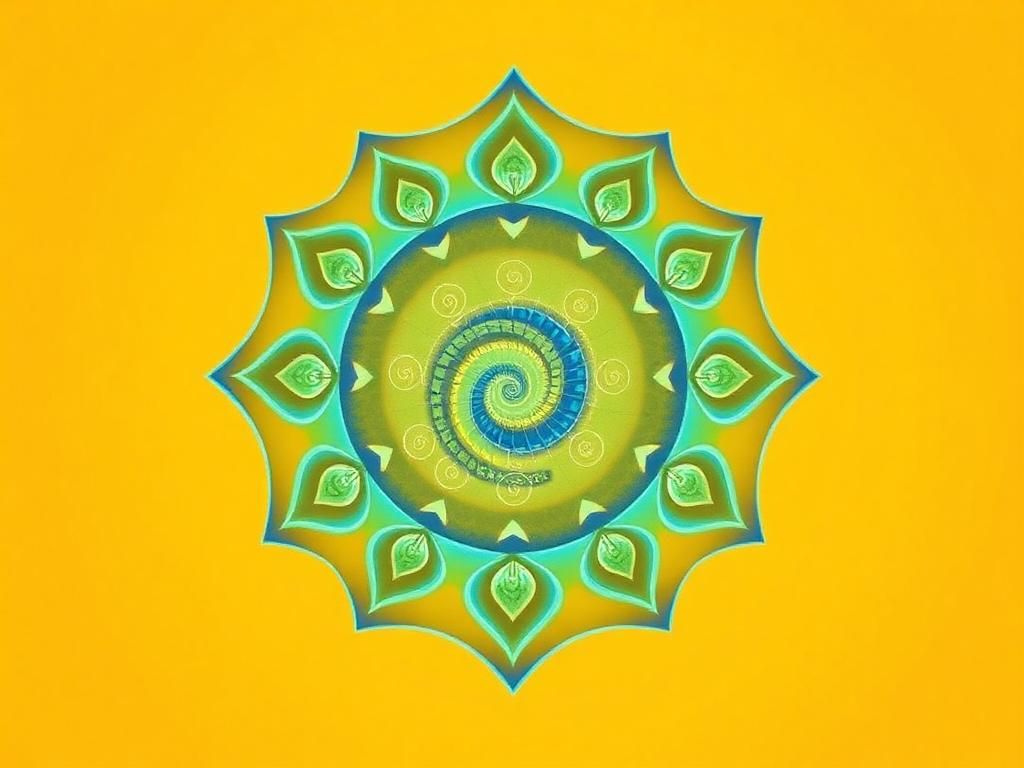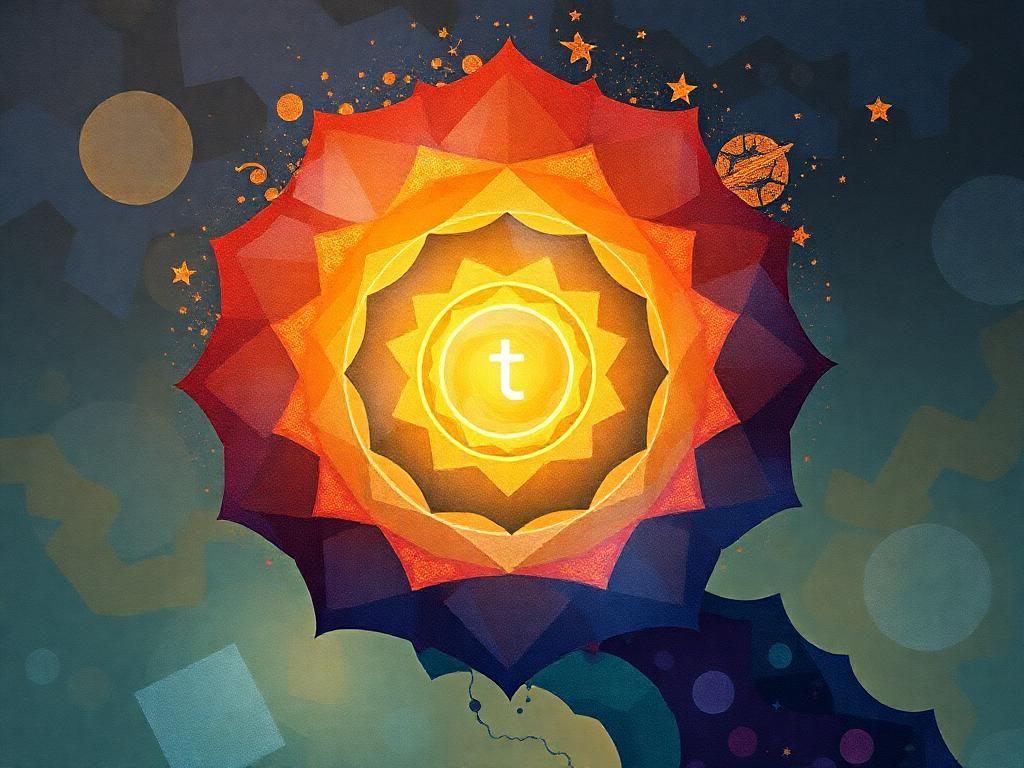Definition of Spiral Spirituality
Spiral spirituality is a profound spiritual concept that emphasizes growth, evolution, and personal transformation through the metaphorical representation of a spiral. This practice highlights that life is not a linear journey; instead, it revisits experiences cyclically at different levels of development. The spiral serves as a universal symbol seen across various cultures, representing the perpetual movement of life — encompassing birth, growth, decline, and renewal.
Throughout history, the spiral has carried significant spiritual weight. In numerous cultures, it symbolizes the interconnectedness of all things and the quest for deeper understanding. Cultures such as the ancient Celts and various indigenous tribes often regarded the spiral as a sign of continuity and the infinite nature of life, reflecting their understanding of existence’s layered experiences.
Overview of Key Concepts
In spiral spirituality, the spiral itself manifests as a potent symbol. It embodies the idea of life being akin to a spiral, where individuals navigate through different phases and layers of experiences. Spiral spiritual practitioners often discuss concepts of personal evolution, recognizing that each cycle brings forth new opportunities for growth. The interconnections found in various spiritual traditions — such as Buddhism, Shamanism, and Celtic mythology — provide rich insights into this transformative process.
Historical Context
Ancient Cultures and the Spiral
Various ancient cultures exhibited profound reverence for the spiral. For instance, the Celts, with their intricate knotwork, frequently employed spirals to signify the cyclical nature of existence and the significance of the life cycle. Similarly, Native American tribes utilized spiral motifs in pottery and rock art to convey spiritual connectedness and the journey of life. Exploratory findings, such as spirals carved into ancient stones and structures, further affirm the integral role that this symbol has played in spiritual traditions worldwide.
Modern Interpretations
In contemporary society, spiral spirituality has emerged as a significant aspect of personal development and self-help movements. It emphasizes the importance of understanding one’s life as an evolving spiral. Influenced by psychological theories such as spiral dynamics — which explores human development across various stages — enthusiasts of spiral spiritual practices often engage in group workshops, meditative practices, and community settings, fostering growth through shared experiences.
The Spiral as a Symbol
Symbolism of the Spiral
The spiral holds multilayered meanings in different contexts. Spiral spirituality views the spiral as a representation of life cycles, where every turn signifies renewal and transformation. This symbolism reflects resiliency and reinforces the idea that individuals can rise from past experiences to embark on new beginnings, reinforcing the dynamics of personal and spiritual growth.
Spirals in Nature
Spirals can be observed abundantly in nature, from the intricate design of seashells to the majestic arms of galaxies. Fascinating examples include the Fibonacci sequence, which governs the arrangement of leaves, flowers, and seed patterns. In spiritual contexts, recognizing these natural spirals can deepen one’s connection to the universe and foster a sense of harmony and balance within oneself. Nature’s spirals serve as reminders of life’s rhythm and the beauty embedded in its cyclical nature.
Practices Involving Spiral Spirituality
Meditation Techniques
Spiral meditation techniques are deeply transformative, enabling individuals to explore their consciousness and embrace personal growth. One notable method involves visualizing a spiral during meditation, allowing practitioners to visualize themselves moving along their life paths. This practice can yield profound insights, promoting emotional healing and clarity.
Guided imagery techniques, such as visualizing a spiral garden, can further enhance this meditative experience. Each aspect of the spiral garden represents different life experiences and lessons, providing space for reflection and personal growth.
Rituals and Ceremonies
Rituals incorporating spiral symbols—such as spiral dances—foster community consciousness and connection among participants. Celebrations marking milestones, such as coming-of-age ceremonies, often include spiral elements to symbolize the individual’s journey and evolution within a cultural context. Such rituals illustrate how spiral spiritual practices can galvanize communities, strengthen bonds, and engender support systems.

Spiral Path in Personal Development
Life as a Spiral Journey
Viewing life as a spiral journey represents a paradigm shift from traditional linear perspectives. This approach encourages individuals to embrace their life stages while acknowledging that every revisit to an experience offers fresh insights and growth opportunities. Rather than dwelling on past mistakes or challenges, spiral spirituality encourages integrating these facets into the present, thereby fostering resilience and adaptability.
Applying Spiral Principles
Incorporating spiral principles into personal development involves setting intentions that align with one’s life journey. Practical techniques such as journaling, creating mind maps, or setting SMART goals within a spiral framework can facilitate clarity and focus. By applying these principles, individuals can effectively navigate their lives, embrace change, and engage in continuous growth.
Spiral Spirituality and Community
Building Community Through Spiral Practices
Spiral spirituality thrives in community settings. Group meditations, workshops, and spiral gatherings foster an environment for shared experiences and collective growth. Such practices allow individuals to share their stories, realizing they are part of a larger narrative that intersects with others, creating a sense of belonging and unity.
The Ripple Effect of Spiral Thinking
One of the profound aspects of spiral spiritual practices is their potential to influence larger communities. As individuals undergo personal growth, it creates a ripple effect, fostering positive changes throughout the group. There are numerous accounts of communities transforming through collective spiral gatherings, where shared healing and growth lead to a renewed sense of purpose and interconnectedness.
Challenges and Critiques of Spiral Spirituality
Misinterpretations
Despite the enriching aspects of spiral spirituality, misconceptions do exist. Common misunderstandings include viewing the practice as merely a trend. Moreover, the potential for cultural appropriation must be acknowledged, as varying interpretations may lead to oversimplifications or trivializations of significant spiritual practices.
Psychological Considerations
Navigating the spiral journey entails addressing psychological considerations. While embracing the spiral path is empowering, it is essential to ensure that spiritual growth does not come at the expense of psychological well-being. Engaging with therapists or spiritual mentors for guidance can provide crucial support as individuals explore the depths of their experiences.
Future of Spiral Spirituality
Trends in Modern Spiritual Practices
The integration of technology into spiritual practices represents a remarkable trend. Apps focused on meditation and community engagement have emerged, allowing individuals to access spiral spiritual principles and connect with others worldwide. Emerging research also suggests a resurgence of interest in spiral dynamics, promoting deeper understanding and engagement with personal development methodologies.
Integrating Spiral Wisdom into Everyday Life
Practical applications of spiral wisdom extend beyond the spiritual realm into everyday life. Individuals are encouraged to adopt a spiral mindset, applying its principles in professional settings, education, and interpersonal relationships. Fostering an environment that embraces cycle reflection, change, and growth can lead to supportive and dynamic societal structures.

Conclusion
Summary of Spiral Spirituality’s Importance
The exploration of spiral spirituality unveils the richness and transformative potential inherent in viewing life as a continuous journey of growth and evolution. These practices are rooted in historical significance and resonate strongly in contemporary contexts.
Final Thoughts
As individuals reflect on their own spiral journeys, they are encouraged to explore the depths of their experiences and engage with others in their communities. By embracing the transformative nature of spiral spirituality, individuals can unlock their potential for personal growth and foster a sense of interconnectedness within society.
| Aspect | Details |
|---|---|
| Spiral Symbolism | Represents life cycles and personal growth |
| Ancient Usage | Prominent in Celtic and Native American cultures |
| Meditation Techniques | Includes spiral visualization and guided imagery |
| Community Practices | Group workshops and collective sharing |
| Challenges | Cultural appropriation and psychological pitfalls |
FAQ Section
1. What is spiral spirituality?
Spiral spirituality involves viewing life as a journey represented by a spiral, emphasizing growth, transformation, and interconnectedness.
2. How can I practice spiral meditation?
Spiral meditation techniques often involve visualizing a spiral during meditation to explore personal growth and consciousness.
3. Are there any cultural issues concerning spiral spirituality?
Yes, some discussions focus on cultural appropriation and the misinterpretation of spiritual practices.
4. How does spiral spirituality relate to personal development?
It helps individuals embrace their experiences and recognize that growth often comes from revisiting stages of life from different perspectives.
5. What symbols represent spiral spirituality?
Common symbols include actual spirals found in nature—like seashells and galaxies—as well as artistic representations in various cultures.
6. Can spiral spirituality enhance community bonding?
Definitely! Engaging in spiral practices fosters shared experiences, creating unity and support within communities.
7. What techniques can I use to apply spiral principles in daily life?
Techniques include journaling about life experiences, utilizing SMART goals within a spiral framework, or participating in community gatherings.
8. Is spiral spirituality suitable for everyone?
Yes, spiral spirituality encompasses diverse perspectives and can be tailored to individual experiences and beliefs.
9. What resources are available for learning about spiral spirituality?
Books, online courses, apps, and community workshops provide platforms for exploring spiral spirituality further.
10. How can I find a community interested in spiral spirituality?
Look for local workshops, spiritual circles, or online platforms that emphasize personal development and group meditation centered around spiral practices.
